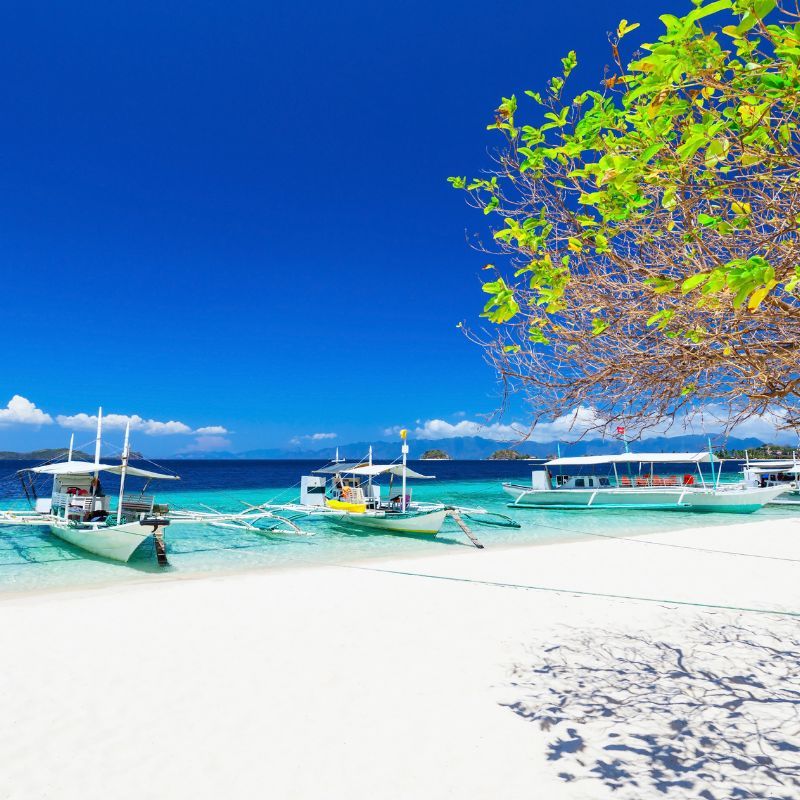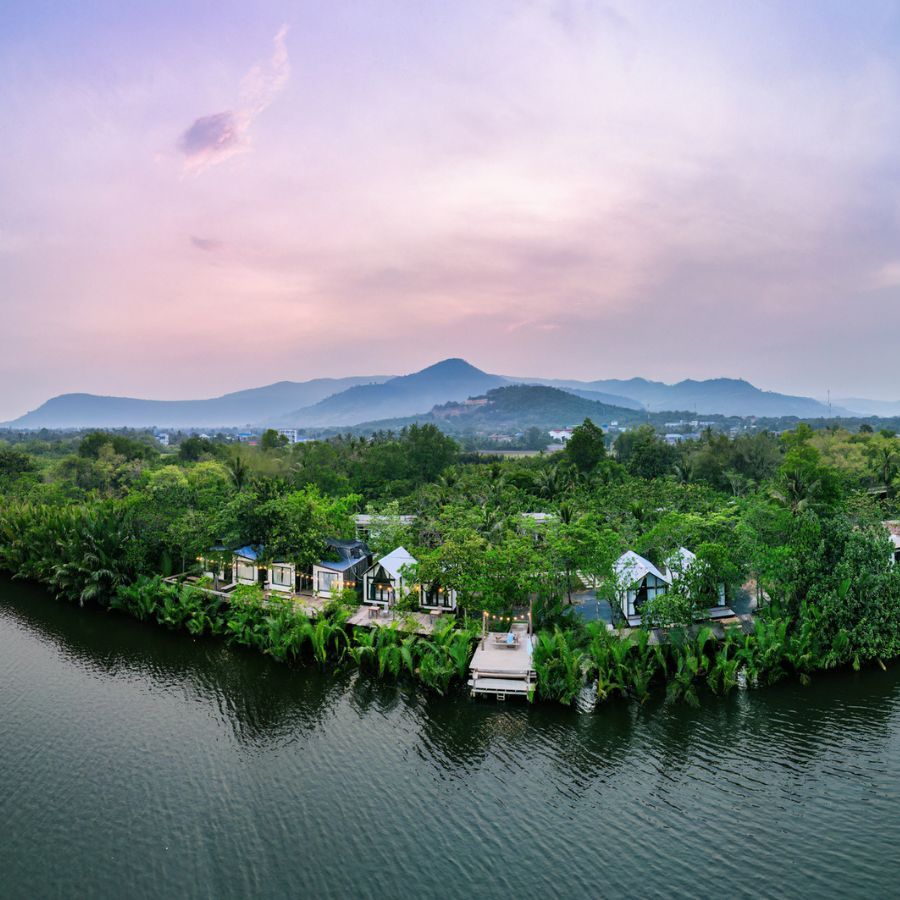
A balanced combination of archaeological, cultural and natural sites, the seven UNESCO World Heritage Sites in Thailand should be on every history and wildlife enthusiast’s itinerary while travelling to the country.
Thailand is quite famous for its Michelin-rated street food, shopping and nightlife, however, it also has a rich cultural heritage associated with it. And, if you want to delve deeper into this side of The Land Of Smiles, then this list of heritage sites can be your guide.

Add these UNESCO World Heritage Sites to your must-visit Thailand itinerary
Historic City of Ayutthaya

Founded in 1350, the historical city of Ayutthaya thrived between the 14th and 18th centuries. In 1767, the Burmese army attacked and burned it down, but the ruins still speak of its glorious past and make for an important archaeological site with its monasteries such as Wat Mahathat and Wat Phra Si Sanphet.
The three rivers surrounding it — Chao Phraya, Pa Sak and Lopburi — add a surreal beauty to its majestic architecture, which is a blend of Khmer and early Sukhothai styles. Khmer is a form of Angkorian architecture that draws inspiration from Indian rock-cutting techniques evident in the temples in the country. It prospered during the 9th to 15th centuries.
Phra Nakhon Si Ayutthaya or the Historic City of Ayutthaya is managed as a national park and protected under the Act on Ancient Monuments, Antiques, Objects of Art and National Museums as laid by Thai law.
Other than its historical significance, it is a foodie’s paradise and the famous cotton candy wrap is a must-try here.
Year of inscription: 1991
How to reach: Historic City of Ayutthaya is about 86 km from Bangkok
Historic Town of Sukhothai and Associated Historic Towns

The capital of Siam’s first kingdom in the 13th and 14th centuries, Sukhothai is what brought the distinct Sukhothai style of Thai architecture into existence, which is very different from Khmer.
The Historic Town of Sukhothai and Associated Historic Towns includes three old places — Sukhothai, Si Satchanalai and Kamphaeng Phet, which were together considered as one political entity owing to their language, administrative system, sculpture and Buddhist monuments along with other factors. Additionally, it was home to brilliant artists and innovators, who gave this place its own unique identity.
Some of the intriguing features of these towns include the extraordinary system of hydraulic engineering that was commissioned during those times as well as its dams, reservoirs, ponds and canals for irrigation of land, and moats that helped protect the residents.
Visitors might be interested to know that these are still used by locals along with Thai language alphabets that were invented in Sukhothai. In fact, time seems to come to a standstill when you visit this place steeped in its rich past. Traditional festivals are also celebrated at the site and the religious places are still treated as important places of worship.
Year of inscription: 1991
How to reach: Historic Town of Sukhothai and Associated Historic Towns is about 427 km from Bangkok
Thungyai-Huai Kha Khaeng Wildlife Sanctuaries

A conserved forest located in Uthai Thani, Tak and Kanchanaburi provinces in western Thailand, Thungyai-Huai Kha Khaeng Wildlife Sanctuaries shares the border with Myanmar. The sanctuaries are home to numerous rare and endangered species of birds and animals. For instance, wild water buffalo, serow, leopard, Asiatic wild dog, red junglefowl cock and green peafowl, other than various types of insects. Spread over 6,222 sq km, the flora and fauna include “exclusively Sino-Himalayan, Sundaic, Indo-Burmese, and Indo-Chinese affinities, intermingling within the property,” according to UNESCO.
The highlight of these sanctuaries is their complex ecosystem. It’s a beautiful amalgamation of breathtaking valleys, peaks, waterfalls and streams. Stating the criterion for them being a World Heritage Site in Thailand, UNESCO says, “Thung Yai-Huai Kha Khaeng Wildlife Sanctuary contains biological features of outstanding natural beauty and of great scientific value, including many natural features and two major watersheds with their associated riverine forests.”
Year of inscription: 1991
Timings: 8:00 am to 4:30 pm (except Holidays)
Ticket Price: THB 200 (USD 6) for foreigners
How to reach: Thungyai-Huai Kha Khaeng Wildlife Sanctuaries is about 310 km from Bangkok
Ban Chiang Archaeological Site

This site is a brilliant example of human cultural, social and technological evolution through the years and the perfect place for all those travellers who still can’t let go of their history books.
One of the most important prehistoric settlements to have been discovered in Southeast Asia, the Ban Chiang Archaeological Site has been excavated since 1966. What makes it significant is the fact that it marked the beginning of the wet-rice culture, archetypal of the region as well as showcasing its development along with providing evidence of it being a pioneer in manufacturing and using metals. According to research conducted using radiometric dating, it has been concluded that the site dates back to 1495 BC.
Also known as the Ban Chiang Museum, it is divided into two sections. The first showcases ancient tools, household items, artefacts and pottery items, over 4,000 years old, systematically arranged for tourists to have a better understanding. The second section, an open-air space, includes the excavation sites providing glimpses of the civilisation buried under layers of history.
Interestingly, on one hand, some of its areas are still not excavated to maintain its integrity and for future research. On the other hand, few areas are used for rearing livestock as well as farming by a comparatively lesser number of people living here.
Year of inscription: 1992
Ticket Price: THB 150 (USD 4) for foreigners and THB 30 (USD 1) For Thai nationals
Timings: 9:00 am to 4:00 pm (except Mondays and holidays)
How to reach: Ban Chiang Archaeological Site is 602 km from Bangkok
Dong Phayayen-Khao Yai Forest Complex

Located between Ta Phraya National Park in the east along the border of Cambodia and Khao Yai National Park in the west is Dong Phayayen-Khao Yai Forest Complex. It has over 800 species of fauna — 112 mammal species (including two species of Gibbon), 392 bird species and 200 species of reptiles and amphibians, among which there are birds and animals belonging to vulnerable, threatened and endangered species such as Siamese crocodile, Asian elephant, tiger, leopard cat and banteng. If you are lucky, you might witness each of these.
The tropical environment of the forest is suitable for the flora and fauna found here. Other than this, it comprises five Protected Areas that are almost contiguous — Khao Yai National Park, Thap Lan National Park, Pang Sida National Park, Ta Phraya National Park and Dong Yai Wildlife Sanctuary.
Regarding its geography, UNESCO writes, “The property falls inside the Central Indochina biogeographic unit and borders the Cardamom Mountains biogeographic unit. The complex also lies at the edge of the Tropical and Subtropical Moist Broadleaf Forest (WWF Global 200 Ecoregion 35) and the Indochina Dry Forest (Ecoregion 54).”
Year of inscription: 2005
How to reach: Dong Phayayen-Khao Yai Forest Complex is about 279 km from Bangkok
Kaeng Krachan Forest Complex

This UNESCO World Heritage Site is another forest rich in biodiversity, the Kaeng Krachan Forest Complex, located in the Tenasserim mountain range’s Thailand side, precisely at the crossroads between Himalaya, Indochina and Sumatra.
Known for endemic and globally endangered species of both plants and wildlife, it includes two Important Bird Areas (IBAs). You can spot some of the endangered species of animals that include yellow/elongated tortoise, Asian giant tortoise, marbled cat, jungle cat and leopard cat.
For Silvology (study of forests) enthusiasts, it might be fascinating to note that it is a mix of both dry and damp evergreen forests — deciduous, montane and deciduous dipterocarp.
Year of inscription: 2021
How to reach: Kaeng Krachan Forest Complex is about 96 km from Bangkok
The Ancient Town of Si Thep and its Associated Dvaravati Monuments

The latest addition to the UNESCO World Heritage Sites in Thailand comprises three sections in Si Thep — the Khao Klang Nok, the Khao Thamorrat Cave, and a typical twin-town site with an inner and outer town bordered by canals. One of the most distinctive features of the Dvaravati Empire that thrived between the sixth and 10th century is its architecture and artistic tradition, also called the Si Thep School of Art. Architecture enthusiasts might be interested to know that it showcases a strong influence from India.
Year of inscription: 2023
How to reach: The Ancient Town of Si Thep and its Associated Dvaravati Monuments is about 238 km from Bangkok
(Hero and featured image credit: Cowardlion/Shutterstock)
All currency conversions were done at the time of writing
Related: Explore The Rich Heritage Of Malaysia At These UNESCO World Heritage Sites
Frequently Asked Questions (FAQs)
– How many UNESCO World Heritage Sites are there in Thailand?
There are seven UNESCO World Heritage Sites in Thailand.
– What does the Historic Town of Sukhothai and Associated Historic Towns include?
The Historic Town of Sukhothai and Associated Historic Towns include three old towns Sukhothai, Si Satchanalai and Kamphaeng Phet, which were together considered as one political entity owing to their language, administrative system, sculpture and Buddhist monuments along with other factors.
– What is the significance of Ban Chiang Archaeological Site?
Ban Chiang Archaeological Site is one of the most important prehistoric settlements to have been discovered in Southeast Asia, and it is being excavated since 1966. What makes it significant is the fact that it marked the beginning of the wet-rice culture, archetypal of the region as well as showcasing its development along with providing evidence of it being a pioneer in manufacturing and using metals.
– What is the significance of Dong Phayayen-Khao Yai Forest Complex?
The Dong Phayayen-Khao Yai Forest Complex has over 800 species of fauna — 112 mammal species (including two species of Gibbon), 392 bird species and 200 species of reptiles and amphibians, among which there are birds and animals belonging to vulnerable, threatened and endangered species such as Siamese crocodile, Asian elephant, tiger, leopard cat and banteng.
– What is the significance of Thungyai-Huai Kha Khaeng Wildlife Sanctuaries?
A conserved forest located in Uthai Thani, Tak and Kanchanaburi provinces in western Thailand, Thungyai-Huai Kha Khaeng Wildlife Sanctuaries shares the border with Myanmar. The sanctuaries are home to numerous rare and endangered species of birds and animals.
– Are there any tour guides available at these sites?
Various tour operators provide different packages including some of these sites based on their distance from each other. They also provide tour guides.
– Are the UNESCO World Heritage sites accessible to people with difficulties?
UNESCO is working towards accessibility of its World Heritage Sites for people with difficulties through the United Nations Disability Inclusion Strategy. For more information, click here.
– Is photography allowed at these sites?
Yes, photography is allowed at these sites but it is always good to check specific details related to it before entering any historical place.










